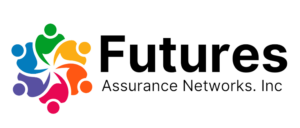
As you gear up for a capital campaign, you must ensure your board members are not just “on board” but are well-prepared for and enthusiastic about their roles in the campaign.
Well-trained board members can be game-changers for capital campaigns. Rather than timid, anxious, and hesitant, they will be courageous, excited, and confident leaders who set the tone for growing your organization’s capacity.
Here are six practical tips to train your board members as you prepare for your capital campaign. Training should touch on the three critical areas:
- Understanding capital campaigns and board responsibilities.
- Defining the roles board members might play.
- Learning how to assist in asking for gifts.
1. Introduce key capital campaign concepts.
Begin your training with a clear, engaging session on a capital campaign, emphasizing its importance and how it differs from regular fundraising. Review the phases of a campaign and the idea that in capital campaigns, 50% of the funding will come from fewer than 20 donors.
This basic campaign training should help board members answer their questions about what’s ahead:
- What is the likelihood our campaign will succeed?
- Where will the lead gifts come from?
- What will be expected from individual board members?
- Will the campaign cannibalize our annual fundraising?
- How long will the campaign take?
Use real-life examples from similar organizations or past campaigns your group has undertaken. You might invite someone from an organization in your community that has completed a successful campaign to share what they learned.
But as the campaign draws closer, you can engage a professional fundraising firm or consulting agency to provide campaign training for your board. Both in-person and online training can work well.
Any campaign training should highlight board responsibilities, stressing the importance of leadership, advocacy, and financial support.
2. Plan interactive workshops that are fun and engaging.
Board training should draw members into discussion and exploration rather than simply providing information through lectures.
Training doesn’t have to be dry. Consider bringing in a guest speaker with campaign experience to share stories and answer questions, making the process more relatable and less intimidating.
Additionally, you can use games, quizzes, and interactive activities to make learning about capital campaigns engaging and fun. For example, to make general campaign training interactive, you might create a “Campaign Quiz” that highlights key campaign concepts and then invites group discussion of each question. Small groups of board members can be assigned questions to discuss, and then they can present their answers to the larger group. Tools like that can make this learning engaging and active.
3. Try this simple and effective exercise to identify board roles in a campaign.
In your training plan, you should develop an exercise to get board members to explore the roles they might choose to play in the campaign. You can use a portion of a board meeting for this exercise or include it in a separate training session.
Start by introducing the steps in the fundraising cycle:
- Identify prospects.
- Educate and cultivate.
- Ask for gifts.
- Thank and recognize donors.
- Involve donors more deeply.
Use a flip chart page for each topic, putting one heading on each page. Post them on a wall so they are easy to reach.
In small groups, get people to brainstorm the things they might do to offer support in each area. Then, add those activities to the appropriate flip chart page. Once all the pages have been filled out, ask each board member to put their name next to the activities they would be willing to help with. The staff will then list how each board member has agreed to help. Be sure to let board members know that only some members must ask for gifts, but they should help in ways best to support the campaign.
This training activity is easy to do and very effective. Your board members will learn that asking is only a tiny part of the fundraising process and that they will all have essential roles whether or not they are comfortable as askers.
1. Train your board members to ask for gifts.
Some of your board members will be active solicitors, and you should make sure they are trained to do a great job. Equip them with the skills they need to ask for gifts respectfully and effectively. You will find several models for training people to ask for gifts.
As with many things, the more people practice, the better they get. So, you should provide opportunities for your board members to practice as much as possible. Often, early requests made by people who are friendly to your organization can be considered practice! Let the donor know that you are still practicing and would like feedback after the solicitation is done.
Casting the early solicitations as practice creates a safe space to try it out and receive feedback. Encourage board members to share their apprehensions and experiences, creating a supportive learning environment.
2. Teach them how to use technology and social media.
With the rise of virtual meetings and digital platforms, board members should be comfortable using technology to engage with donors and promote the campaign. Offer training sessions on leveraging social media, managing virtual donor meetings, and using donor management systems effectively.
3. Schedule lots of training.
Instead of one-off training sessions, integrate short, regular training segments into your existing board meetings. This approach keeps the campaign in mind, allows for ongoing learning, and provides opportunities to address questions and challenges as they arise. It can also maintain momentum and ensure board members are up to date on campaign progress and strategies.
Trainings work best when the concepts learned are used in short order. So, rather than having one long training week or months before your campaign and assuming that’s all you need, your training process will be more effective if you plan lots of short training on concepts that board members need immediately.
For example, in the planning phase of your campaign, you will work on developing a support case. This will be a great time to design a particular exercise at a board meeting on why board members care.
Ask every board member to take a few minutes and write down five reasons they think the upcoming campaign is essential, focusing on the impact of what the campaign will make possible. When everyone has finished writing, ask each person to share one of the items they wrote down. Go around the table until all the ideas have been captured. Capture the items on a flipchart.
Once all the items are captured on one flip chart page, ask the group to decide which three on the list are the most important. Those items are likely the key elements in your case for support. This exercise will help board members internalize why the campaign matters to them. This exercise can easily be adapted for a virtual meeting using Zoom’s whiteboard function.
You can devise simple participatory exercises like this at board meetings during other campaign phases.
Board training for a capital campaign is not just about transferring knowledge; it’s about engaging and empowering your board members to take active, meaningful roles in the campaign. By making training participatory, fun, and ongoing, you lay the groundwork for a successful capital campaign driven by a committed, enthusiastic board. Remember, a well-prepared board is your campaign’s best asset.



